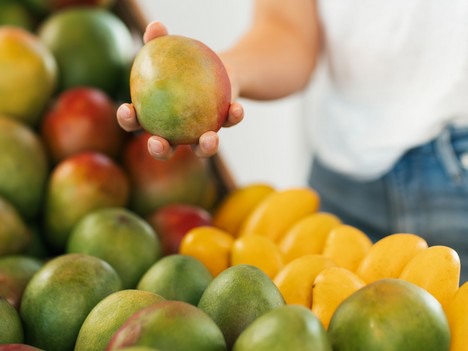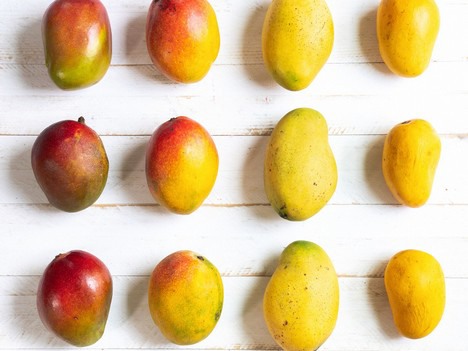When it comes to vying for shelf space, are mangos making their way to the forefront as a mainstream fruit?
“In 2019, they outpaced ¾ of the fruit category in year-over-year growth for both dollar and velocity,” says Tammy Wiard, retail marketing manager with the Orlando, Fl.-based National Mango Board (NMB).
The consumption rate points to the same conclusion. “The consumption per capita of mangos in the US has grown 73 percent since 2005 (1.88 lbs/person in 2005 vs 3.25 lbs/person in 2019),” says Leonardo Ortego, the NMB’s director of research. “But it is still low in comparison with other mango producing countries in the world like Mexico, Brazil, India, etc.”
That said, data from the Food and Agriculture Organization of the United Nations based in Rome, Italy shows that the US is ahead of other sizable countries in mango consumption. In 2017, the US per capita consumption rate of mangos was 3.21 lbs/person. “This is low compared to countries that have well-established mango production,” says Manuel Michel, executive director of the NMB. “However, when you compare it to other countries that also import mangos, Americans eat more of the fruit in general.” Comparably for 2017: Germans ate 2.3 lbs./person; the United Kingdom ate 2.8 lbs./person; France ate 2.0 lbs./person; Saudi Arabians ate 2.61 lbs./person.

Value-added helping
As with many commodities, value-added products or fresh-cut mangos are helping increase consumption of the fruit in the US, as is a focus on ripening. “Fresh-cut mangos are ranked #7 in all of fresh-cut fruit,” notes Wiard. “In 2019, fresh-cut mango total sales growth surpassed all other fresh-cut fruit in the Top 15 rankings.”
One thing the board continues to work on is making sure consumers know that mangos aren’t just a seasonal fruit. “The available mango varieties shift as the crop moves through each growing country and region,” says Wiard. “This natural flow means that consumers will be exposed to different varieties throughout the year.” The top six commercial varieties in the market are Honey, Francis, Haden, Keitt, Kent and Tommy Atkins.
Meanwhile countries of origin continue to increase their volume of mango. Currently, the six main countries exporting mango to the US (in order of volume) are: Mexico, Peru, Ecuador, Brazil, Guatemala and Haiti. “Some countries like Dominican Republic and Costa Rica have increased their export volume to the US by 78 percent and 123 percent respectively,” says Ortego, adding that in smaller quantities, the US also imports mangos from Australia, Jamaica, Nicaragua, Thailand, Pakistan and Vietnam.

Focusing on education
One part of convincing consumers that mangos are no longer simply a seasonal item includes continued education efforts of course. This also includes educating retailers. “Where and how retailers display mangos makes a difference,” says Wiard, who adds that doing things like consistent placement on the floor, partnering mangos with stone fruit in the summer and using display bins as secondary placement make a difference in sales.
Displays in fact are a significant focus of the NMB’s marketing efforts and these include mango bins available through the NMB. (This year’s focus is on seasonal headers to use with the display bins around grilling, tailgating, back-to-school options including mangoes.) Wiard adds that retailers can also order free point-of-sale materials to display with the mangos.
Naturally, the NMB continues to focus on increasing mango consumption in the US. “It is important to keep mangos in a highly visible area in the produce section,” says Wiard, who adds that retailers can also build more sales by carrying multiple varieties and sizes. “A few years ago, mangos represented nearly 40 percent of the tropical or exotic fruit category. We have outgrown that section and mangos now need a permanent home where consumers can consistently find them.”
For more information:
Marissa Khan
National Mango Board
Tel: +1 (407) 629-7318
mkhan@mango.org
https://www.mango.org/
